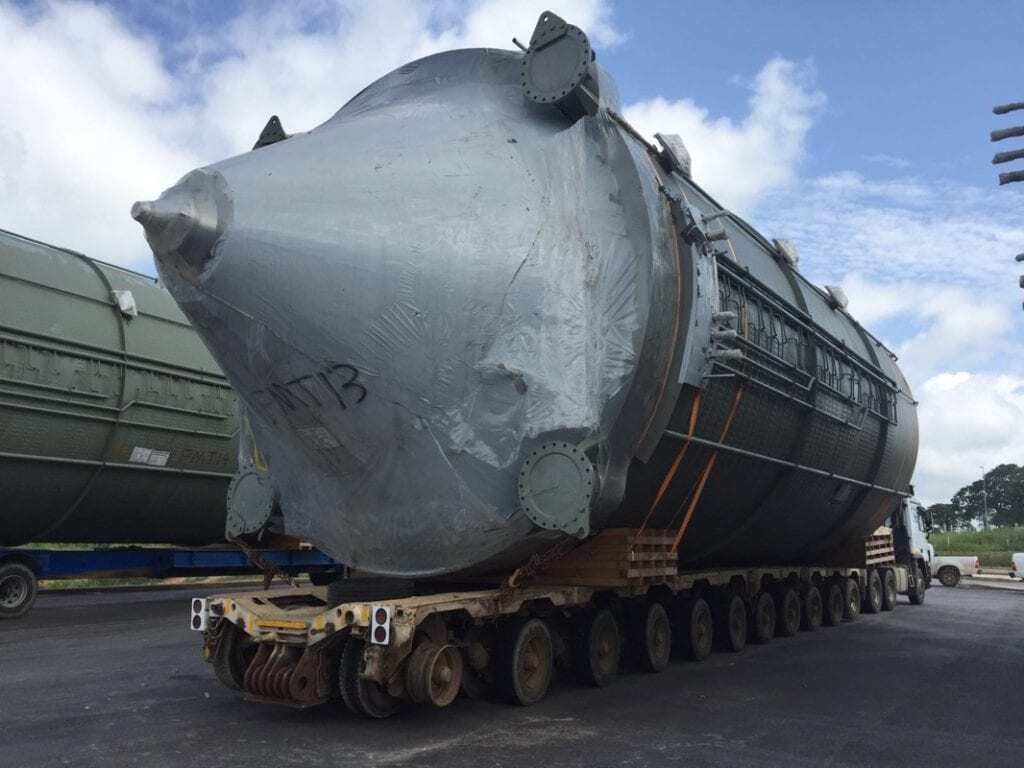PCW has been in touch with NATCO, a local project freight forwarder with some 40 staff. We asked them a variety of questions, including the current situation in Angolan ports, the possibility of trans-shipment via those ports and the impact on the current low cost of oil and gas. As most people know it was not too long ago that the McDonalds’ Hamburger Index showed that the most expensive hamburger to buy in the world was actually in Luanda; this was mainly due to the oil and gas development. Here is a brief, but very informative report on the current state of the shipping industry in Angola. We trust you will find it useful for your business.
The Angolan Maritime Gateways and its Importance in terms of Transport Logistics
For cross African logistics Angolan ports are not yet appropriate for the trans-shipment as a transit channel into neighboring countries in the interior, in the east or northeast beyond Angola. However, they are all important when it comes to giving an effective coverage of Angola’s vast territories.
A Close-up Look at Angola’s Main Sea Ports
LUANDA is the main port in Angola. Other than the Greater Luanda and Malange-City areas, it serves the northern parts up to the center of Angola, mainly in the East where the mining industry operates and also the Bengo, Uige and Kwanzas’ provinces.
Another port that carries the same level of importance is LOBITO. This one takes care of the central plateau as well as the hinterland towards the Zambian border. The main area of trade and industrial development in the middle of the country is the City of Huambo.
The transit into Zambia from Lobito Port is theoretically viable, however, in practice still quite unusual, under-developed, under-explored and not yet a common transit lane neither by road nor by the rehabilitated Benguela-Railway to Luau on the border of Zambia.
There are endeavors, in particular from the side of global shipping lines. These, in conjunction with the refurbished Benguela railway, help promote Lobito as an inbound gateway and distribution turntable for the interior and the transit to other nearby countries. However, there is no suitable infrastructure in place at the moment to deal with it.
NAMIBE Port, which is located in the very south of the country, is indispensable for the supply of Lubango City and its hinterland. Again, there is a potential for more mining development in a near future in addition to the hydropower industry that already exists in the area.
The Port of SOYO, which is otherwise known as Kwanda Base, is located at the mouth of the Congo River. It is exclusively used by the oil and gas exploration industry and no commercial goods can be conducted through Soyo Port. Should there be cargo for the non-industrialised northern Angolan region, it should be disembarked in Luanda and then re-forwarded by truck to the north.
CABINDA Port is in the Angolan exclave and it acts as an important supply to Cabinda town. Cabinda exclave is not accessible from the mother territory. It has to be strictly distinguished between non-oil and gas cargo and oil and gas cargo when talking about Cabinda. When oil and gas cargo is shipped directly to Malongo Terminal, non-oil and gas cargo is not allowed to be offloaded at Malongo. There are a number of port restrictions at Cabinda Port, which must be followed, including the choice of vessel, draft limits, and the means of discharging and evacuation.
Note: It is important to contact NATCO ANGOLA prior to any arrangements of shipment for cargo to the Angolan hinterland to ensure the right choice of port is made after taking into account the means of transportation, route options, customs rules, and other regulations that will make customs clearance a seamless one.
Oil and Gas related consignments have to go through a special customs in Angola. The same applies to other industry sectors such as mining, infrastructure and construction, all of which need to follow the strict regulations regarding routing and documentation.
The Outlook
The government aims to develop its own national production more and diversify. It also aims to be less dependent on the day-to-day consumption from abroad. Therefore, in the future, imports of construction and raw materials are expected to increase to fulfill shortages to enable the setup of factories and manufacturing plants, thus improving production in Greater Luanda, Lobito, and the areas along the southern coastline.
Oil and gas exploration activities, as well as mining continue to be the high priorities of the government; this is mostly due to the sizable investments they have made in the last few decades within these industries. It is also because the country has a high dependency on the revenue that oil and gas, diamonds and other raw materials generate.
There is a plan for new infrastructure in Angola; this includes new airports, seaport expansions and housing. The existing dams and power stations will also be refurbished.
Forestry projects are in the near starting phase. Some important projects in agriculture, farming and cattle cultivation have initiated within several areas in the fertile hinterland. The goal of these projects is the acceleration of long term food production.
Angola is traditionally used to partnering up with any country to cover their wide-ranging needs. There are also opportunities for logistics providers to connect the cargo flow from its country of origin to Angola.
NATCO Angola is a complete forwarding and customs brokerage company staffed with 40 professionals
 Content kindly provided by:
Content kindly provided by:
Rene Werlen, NATCO
werlen@interlogserv.ch

Pictured here was part of a transport and job site delivery of a new complete brewery about 20,000 metric tons from northern Europe and some from China for discharge at Luanda port from lo/lo and ro/ro vessels. Natco carried out the job-site delivery to Bom Jesus located in the nearby Bengo province.
Transport was successfully completed some months ago and a new brand of beer is now produced in Angola.

